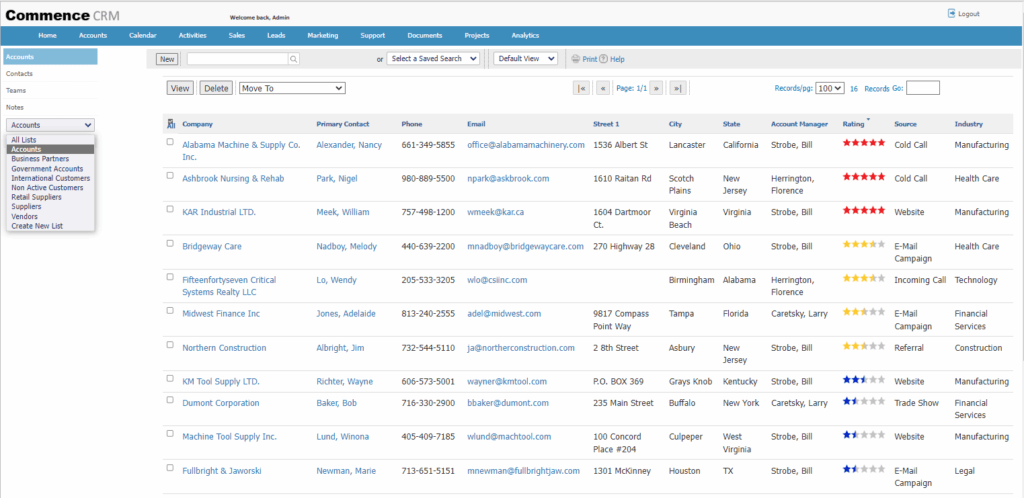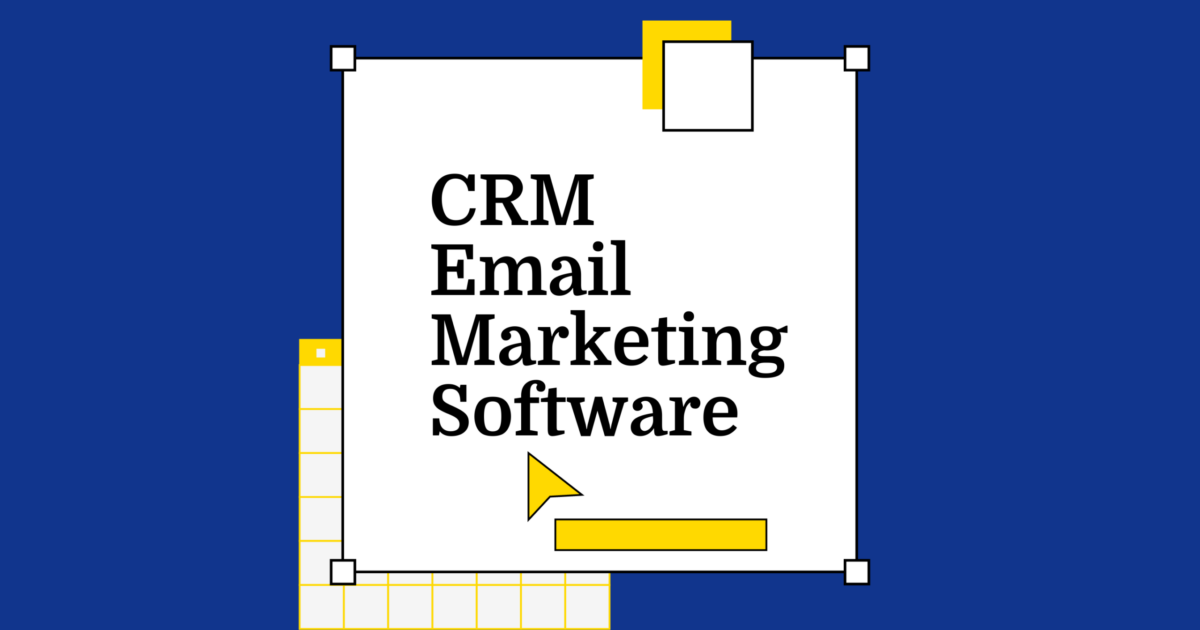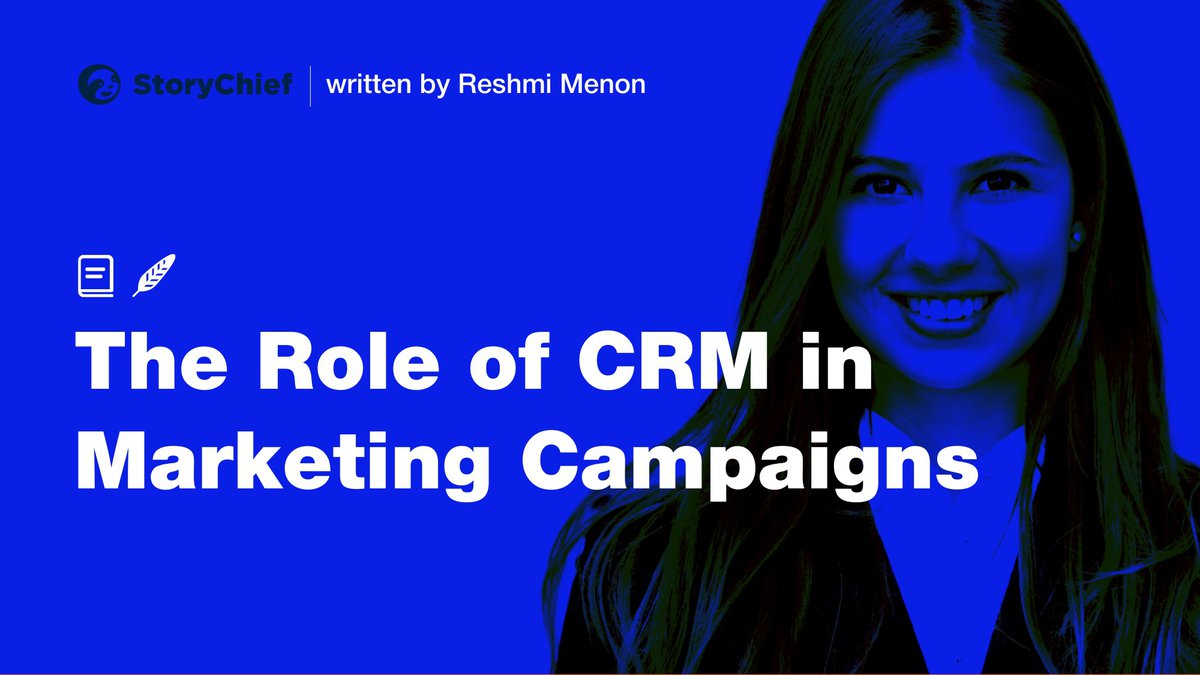
Introduction: The Power of Segmentation in Modern Marketing
In the dynamic world of marketing, the one-size-fits-all approach is as outdated as a dial-up modem. Today’s savvy consumers crave personalized experiences, and that’s where Customer Relationship Management (CRM) marketing segmentation steps in. It’s not just a buzzword; it’s the cornerstone of building meaningful relationships with your customers and driving sustainable business growth. This comprehensive guide will delve deep into the intricacies of CRM marketing segmentation, equipping you with the knowledge and strategies to create targeted campaigns that resonate with your audience and boost your bottom line.
What is CRM Marketing Segmentation?
At its core, CRM marketing segmentation is the practice of dividing your customer base into distinct groups (segments) based on shared characteristics. These characteristics can range from demographics and purchase history to online behavior and engagement levels. The goal? To tailor your marketing messages, offers, and overall experiences to the specific needs and preferences of each segment. Think of it as crafting individual love letters instead of sending a generic mass email. The result? Higher engagement, increased conversions, and enhanced customer loyalty.
Imagine a world where every marketing interaction feels relevant and personal. That’s the promise of CRM marketing segmentation. By understanding your customers better, you can anticipate their needs, address their pain points, and provide them with the solutions they are actively seeking. This level of personalization fosters a sense of connection and trust, making your brand stand out from the noise of the digital landscape.
Why is CRM Marketing Segmentation Important?
The benefits of CRM marketing segmentation are numerous and far-reaching. Here are some of the key advantages:
- Improved Targeting: By segmenting your audience, you can deliver the right message to the right people at the right time. This eliminates wasted marketing spend and increases the chances of conversion.
- Enhanced Personalization: Tailoring your content and offers to specific segments makes your marketing efforts feel more relevant and engaging, leading to higher click-through rates and conversions.
- Increased Customer Loyalty: When customers feel understood and valued, they are more likely to become loyal advocates for your brand. Segmentation helps you build stronger relationships and foster long-term customer retention.
- Higher ROI: By focusing your resources on the most promising segments, you can maximize your return on investment and achieve greater profitability.
- Better Product Development: Understanding your customer segments provides valuable insights into their needs and preferences, which can inform your product development and innovation efforts.
- Improved Customer Experience: Personalization and relevant communication contribute to a more positive and satisfying customer experience, leading to increased satisfaction and advocacy.
Key Segmentation Strategies and Techniques
Now that we’ve established the ‘why,’ let’s dive into the ‘how.’ There are several effective segmentation strategies you can employ to divide your customer base into meaningful groups. Here are some of the most popular and impactful:
1. Demographic Segmentation
Demographic segmentation involves grouping customers based on readily available characteristics such as age, gender, income, education, marital status, occupation, and ethnicity. This is one of the most basic and widely used segmentation approaches. While it provides a foundational understanding of your audience, it’s often best used in conjunction with other segmentation methods.
Example: A clothing retailer might target different age groups with tailored marketing campaigns. They could promote trendy apparel to younger demographics and offer more classic styles to older customers.
2. Geographic Segmentation
Geographic segmentation focuses on the location of your customers, including country, region, city, and even neighborhood. This approach is particularly useful for businesses with a physical presence or those that offer location-based services. It allows you to tailor your marketing messages to reflect local preferences, cultural nuances, and regional needs.
Example: A restaurant chain might offer different menu items or promotions based on the regional tastes of its customers. They could promote spicy dishes in areas where there is a preference for such flavors.
3. Psychographic Segmentation
Psychographic segmentation delves into the psychological aspects of your customers, including their lifestyles, values, attitudes, interests, and personalities. This approach provides a deeper understanding of what motivates your customers and what they care about. It allows you to craft marketing messages that resonate with their core beliefs and aspirations.
Example: A travel agency might segment its customers based on their travel preferences, such as adventure seekers, luxury travelers, or budget-conscious backpackers. They could then tailor their marketing content to highlight destinations and experiences that align with each segment’s interests.
4. Behavioral Segmentation
Behavioral segmentation analyzes how customers interact with your brand, including their purchase history, website activity, social media engagement, and product usage. This approach provides valuable insights into customer behavior and allows you to identify patterns and trends. It’s often considered one of the most effective segmentation methods because it’s based on actual customer actions.
Example: An e-commerce retailer might segment its customers based on their purchase frequency, average order value, and product preferences. They could then offer personalized product recommendations, exclusive discounts, and loyalty programs to nurture repeat business.
5. Needs-Based Segmentation
Needs-based segmentation focuses on identifying the specific needs and problems that your customers are trying to solve. This approach requires a deep understanding of your customers’ pain points and motivations. It allows you to position your products or services as the ideal solutions to their needs.
Example: A software company might segment its customers based on their business size and technical expertise. They could then offer different product packages and support resources tailored to the specific needs of each segment.
6. Value-Based Segmentation
Value-based segmentation categorizes customers based on their lifetime value to your business. This approach helps you prioritize your marketing efforts and allocate resources to the most valuable customers. It involves analyzing factors such as purchase history, average order value, and customer retention rate.
Example: A financial institution might segment its customers based on their account balances and investment portfolios. They could then offer premium services and personalized financial advice to their high-value clients.
Implementing CRM Marketing Segmentation: A Step-by-Step Guide
Now that you’re familiar with the different segmentation strategies, let’s outline the steps involved in implementing CRM marketing segmentation effectively:
Step 1: Define Your Objectives
Before you start segmenting your customer base, clearly define your marketing goals. What are you trying to achieve? Are you aiming to increase sales, improve customer retention, or drive brand awareness? Your objectives will guide your segmentation strategy and help you measure the success of your efforts.
Step 2: Gather Customer Data
Data is the lifeblood of CRM marketing segmentation. Collect as much relevant data as possible from various sources, including your CRM system, website analytics, social media platforms, and customer surveys. Ensure that your data is accurate, up-to-date, and compliant with privacy regulations.
Step 3: Choose Your Segmentation Variables
Select the segmentation variables that are most relevant to your business and your marketing objectives. Consider a combination of demographic, geographic, psychographic, and behavioral variables to create meaningful segments. Remember to prioritize variables that provide actionable insights.
Step 4: Segment Your Customer Base
Use your chosen segmentation variables to divide your customer base into distinct groups. You can use your CRM system or other marketing automation tools to create and manage your segments. Ensure that your segments are mutually exclusive and collectively exhaustive, meaning that each customer belongs to only one segment and all customers are assigned to a segment.
Step 5: Analyze Your Segments
Once you’ve created your segments, analyze them to gain a deeper understanding of their characteristics, needs, and preferences. Identify the key attributes that differentiate each segment and determine their potential value to your business. This analysis will inform your targeting and messaging strategies.
Step 6: Develop Targeted Marketing Campaigns
Create marketing campaigns that are tailored to the specific needs and preferences of each segment. Use personalized messaging, offers, and content to resonate with your audience and drive engagement. Consider using different channels, such as email, social media, and website, to reach each segment effectively.
Step 7: Measure and Optimize Your Results
Continuously monitor the performance of your marketing campaigns and track key metrics, such as click-through rates, conversion rates, and customer lifetime value. Use this data to optimize your segmentation strategy and refine your targeting and messaging. CRM marketing segmentation is an iterative process, so be prepared to experiment and make adjustments as needed.
Tools and Technologies for CRM Marketing Segmentation
Several tools and technologies can help you implement CRM marketing segmentation effectively. Here are some of the most popular and powerful options:
- CRM Systems: Systems like Salesforce, HubSpot, Zoho CRM, and Microsoft Dynamics 365 offer robust segmentation capabilities and allow you to manage your customer data, create segments, and launch targeted marketing campaigns.
- Marketing Automation Platforms: Platforms like Marketo, Pardot, and ActiveCampaign provide advanced segmentation features, as well as automation workflows, lead nurturing, and email marketing capabilities.
- Customer Data Platforms (CDPs): CDPs like Segment and Tealium collect and unify customer data from various sources, providing a single view of your customers and enabling more sophisticated segmentation.
- Analytics Tools: Tools like Google Analytics and Adobe Analytics provide valuable insights into customer behavior and website activity, which can be used to inform your segmentation strategy.
- Email Marketing Platforms: Platforms like Mailchimp, Constant Contact, and Klaviyo offer segmentation features and allow you to send targeted email campaigns to your customer segments.
Best Practices for CRM Marketing Segmentation
To maximize the effectiveness of your CRM marketing segmentation efforts, keep these best practices in mind:
- Start Small: Don’t try to segment your entire customer base at once. Start with a few key segments and gradually expand your efforts as you gain experience and refine your strategy.
- Focus on Actionable Insights: Choose segmentation variables that provide actionable insights and allow you to tailor your marketing efforts effectively.
- Keep it Simple: Avoid creating too many segments, as this can make it difficult to manage your campaigns and track your results.
- Test and Iterate: Continuously test and refine your segmentation strategy to ensure that it’s delivering the desired results.
- Personalize Everything: The more personalized your marketing efforts, the more effective they will be.
- Respect Customer Privacy: Always comply with privacy regulations and obtain consent before collecting and using customer data.
- Regularly Review and Update: Customer preferences and market conditions change over time. Regularly review and update your segments to ensure they remain relevant and effective.
Examples of Successful CRM Marketing Segmentation in Action
Let’s explore a few real-world examples of how businesses are using CRM marketing segmentation to achieve outstanding results:
Example 1: E-commerce Retailer
An e-commerce retailer segments its customers based on their purchase history, browsing behavior, and demographics. They then create targeted campaigns to:
- Offer personalized product recommendations to customers who have previously purchased similar items.
- Send abandoned cart emails to customers who have left items in their shopping carts.
- Offer exclusive discounts to loyal customers with high lifetime values.
- Target specific age groups with tailored marketing messages and product promotions.
Result: Increased sales, improved customer retention, and higher customer lifetime value.
Example 2: SaaS Company
A SaaS company segments its customers based on their industry, company size, and product usage. They then create targeted campaigns to:
- Offer different pricing plans based on company size and feature requirements.
- Create industry-specific content to address the unique needs and challenges of different industries.
- Provide personalized onboarding and support to ensure that customers are successful with the product.
- Target specific job titles with tailored marketing messages and product demos.
Result: Higher conversion rates, improved customer satisfaction, and increased customer retention.
Example 3: Financial Services Company
A financial services company segments its customers based on their financial goals, income, and risk tolerance. They then create targeted campaigns to:
- Offer personalized financial advice and investment recommendations based on individual goals and risk profiles.
- Target high-net-worth individuals with exclusive investment opportunities and premium services.
- Create educational content to help customers make informed financial decisions.
- Offer different loan products based on income and creditworthiness.
Result: Increased customer acquisition, improved customer loyalty, and higher revenue per customer.
Challenges and How to Overcome Them
While CRM marketing segmentation offers significant benefits, it’s not without its challenges. Here are some common hurdles and how to overcome them:
- Data Quality: Inaccurate, incomplete, or outdated data can undermine your segmentation efforts. To overcome this challenge, invest in data cleansing and enrichment tools, and regularly review and update your data.
- Data Privacy: Ensuring compliance with data privacy regulations, such as GDPR and CCPA, can be complex. To address this, implement robust data privacy policies, obtain consent from your customers, and use data encryption and anonymization techniques.
- Lack of Resources: Implementing CRM marketing segmentation can require significant time, effort, and resources. To overcome this, prioritize your efforts, start small, and use automation tools to streamline your workflows.
- Integration Issues: Integrating your CRM system with other marketing tools and platforms can be challenging. To address this, choose a CRM system that integrates seamlessly with your existing tools, or use a customer data platform (CDP) to unify your data.
- Segment Overlap: Segments can sometimes overlap, making it difficult to target your campaigns effectively. To overcome this, carefully define your segments, use clear segmentation criteria, and test your campaigns to identify any overlap.
- Measuring ROI: It can be challenging to measure the return on investment of your CRM marketing segmentation efforts. To address this, track key metrics, such as click-through rates, conversion rates, and customer lifetime value, and use A/B testing to compare the performance of different segments.
The Future of CRM Marketing Segmentation
The landscape of CRM marketing segmentation is constantly evolving. Here are some trends that are shaping the future of this critical marketing discipline:
- Artificial Intelligence (AI): AI and machine learning are being used to automate segmentation, personalize content, and predict customer behavior.
- Hyper-Personalization: Marketers are moving beyond basic segmentation and striving to create highly personalized experiences that cater to individual customer preferences.
- Omnichannel Marketing: Businesses are integrating their marketing efforts across multiple channels, such as email, social media, and mobile, to create a seamless customer experience.
- Focus on Customer Journey: Marketers are focusing on mapping the customer journey and tailoring their marketing efforts to each stage of the journey.
- Data Privacy and Transparency: With growing awareness of data privacy, businesses are prioritizing transparency and building trust with their customers.
Conclusion: Embrace the Power of Personalized Marketing
CRM marketing segmentation is no longer a luxury; it’s a necessity for businesses that want to thrive in today’s competitive market. By understanding your customers, tailoring your marketing efforts, and delivering personalized experiences, you can build stronger relationships, increase customer loyalty, and drive sustainable business growth.
Embrace the power of personalized marketing. Start by defining your objectives, gathering customer data, and choosing the right segmentation strategies for your business. Implement your segmentation plan, analyze your results, and continuously optimize your efforts. With a well-executed CRM marketing segmentation strategy, you can unlock the full potential of your customer relationships and achieve remarkable marketing success.
So, take the first step today. Dive into the world of CRM marketing segmentation and discover how you can transform your marketing efforts and create lasting value for your business and your customers.


